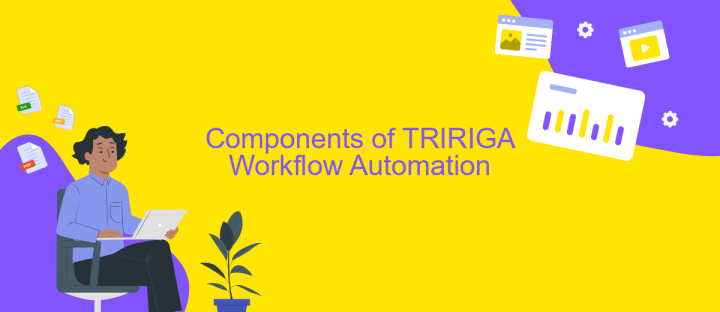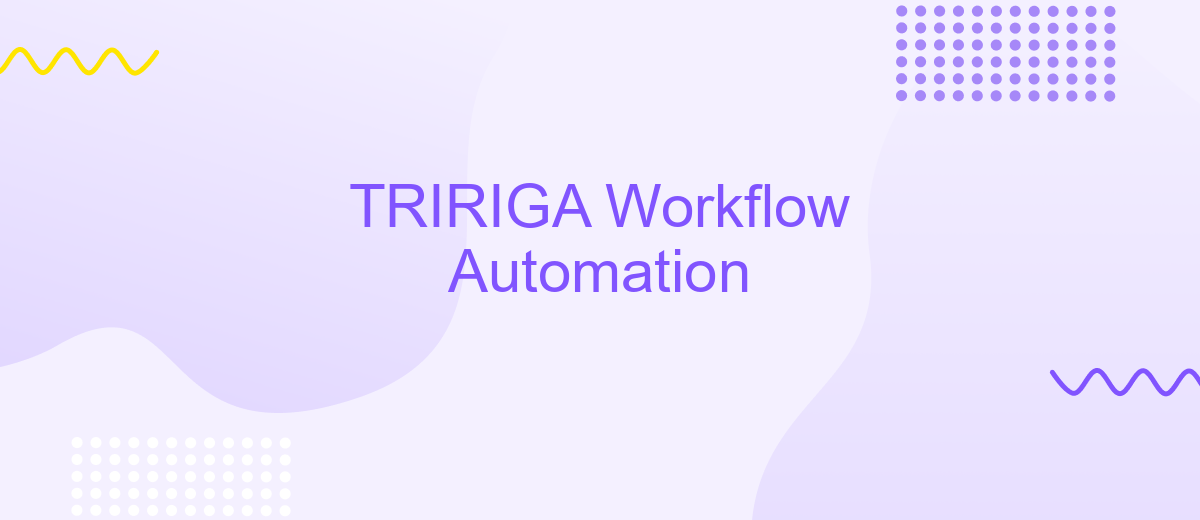TRIRIGA Workflow Automation
TRIRIGA Workflow Automation streamlines business processes by integrating automated workflows into the TRIRIGA platform. This powerful tool enhances efficiency, reduces manual errors, and ensures compliance with organizational standards. By leveraging TRIRIGA's robust capabilities, businesses can optimize resource management, improve decision-making, and achieve greater operational agility. Discover how TRIRIGA Workflow Automation can transform your enterprise's workflow management and drive productivity to new heights.
Introduction
TRIRIGA Workflow Automation is a powerful tool designed to streamline and enhance business processes. By automating routine tasks and complex workflows, it helps organizations save time, reduce errors, and improve overall efficiency. The platform offers a wide range of features tailored to meet the diverse needs of various industries.
- Automated task management
- Customizable workflows
- Real-time data integration
- Advanced reporting and analytics
One of the key benefits of TRIRIGA Workflow Automation is its ability to integrate seamlessly with other systems and services. For instance, using ApiX-Drive, businesses can easily connect TRIRIGA with various applications, ensuring smooth data flow and enhanced operational efficiency. This level of integration allows organizations to optimize their workflows further, making TRIRIGA an invaluable asset in today's fast-paced business environment.
Benefits of TRIRIGA Workflow Automation

TRIRIGA Workflow Automation offers a multitude of benefits that streamline business processes and enhance operational efficiency. By automating repetitive tasks, organizations can significantly reduce the time and effort required for manual interventions, leading to faster decision-making and improved accuracy. This automation minimizes human errors, ensuring that workflows are executed consistently and reliably, which is crucial for maintaining high standards of service and compliance.
Furthermore, TRIRIGA Workflow Automation facilitates seamless integration with other enterprise systems, enhancing data flow and interoperability. Tools like ApiX-Drive can be instrumental in this regard, enabling easy and efficient integration of various applications without the need for extensive coding. This not only saves time but also reduces the complexity associated with managing multiple systems. As a result, organizations can achieve a more cohesive IT environment, allowing for better data management and more informed business decisions.
Components of TRIRIGA Workflow Automation

TRIRIGA Workflow Automation is a robust solution designed to streamline and optimize business processes within an organization. It offers various components that work together to ensure efficient workflow management and automation.
- Workflow Designer: This tool allows users to create, modify, and manage workflows visually. It provides a user-friendly interface to design complex workflows with ease.
- Business Rules Engine: This component enables the definition and enforcement of business rules within workflows. It ensures that processes adhere to organizational policies and standards.
- Integration Services: TRIRIGA supports seamless integration with other systems and applications. Using services like ApiX-Drive, organizations can easily connect TRIRIGA with various third-party applications to automate data exchange and enhance workflow efficiency.
- Notification and Alerts: This feature ensures that users are promptly informed about important events and tasks. It helps in maintaining timely actions and reducing delays in workflow processes.
- Reporting and Analytics: TRIRIGA provides comprehensive reporting and analytics tools to monitor workflow performance. These insights help in identifying bottlenecks and areas for improvement.
By leveraging these components, TRIRIGA Workflow Automation significantly enhances operational efficiency, reduces manual intervention, and ensures that business processes are executed seamlessly. The integration capabilities, especially with tools like ApiX-Drive, further extend its functionality, making it a versatile solution for various organizational needs.
Implementation and Deployment

Implementing and deploying TRIRIGA Workflow Automation involves several critical steps to ensure a seamless transition and optimal performance. Initially, it is essential to conduct a thorough assessment of current workflows and identify areas where automation can bring the most significant benefits. This assessment helps in understanding the specific needs and customizing the solution accordingly.
Once the assessment is complete, the next phase involves configuring the TRIRIGA system to align with the identified requirements. This includes setting up the necessary workflows, defining roles and permissions, and integrating with existing systems. Tools like ApiX-Drive can facilitate these integrations by providing a streamlined interface for connecting TRIRIGA with various external applications.
- Conduct a comprehensive workflow assessment
- Configure TRIRIGA system settings
- Define roles and permissions
- Integrate with existing systems using ApiX-Drive
After configuration, thorough testing is crucial to ensure that the automated workflows function as expected. This involves running pilot tests, gathering user feedback, and making necessary adjustments. Finally, a phased deployment strategy can help in gradually transitioning to the new system, minimizing disruptions and ensuring a smooth adoption process.


Best Practices for TRIRIGA Workflow Automation
To ensure optimal performance in TRIRIGA Workflow Automation, it is crucial to design workflows with simplicity and clarity in mind. Begin by mapping out the entire process, identifying key steps and decision points. Use clear, descriptive naming conventions for tasks and variables to make the workflow easily understandable. Regularly review and refine workflows to eliminate unnecessary steps and improve efficiency. Additionally, ensure that all stakeholders are trained and understand their roles within the automated processes.
Integrating TRIRIGA with other systems can significantly enhance workflow capabilities. Utilizing services like ApiX-Drive can streamline these integrations, allowing seamless data exchange between TRIRIGA and other platforms. ApiX-Drive offers a user-friendly interface and supports numerous applications, making it easier to connect TRIRIGA with various tools without extensive coding. Regularly monitor and maintain these integrations to ensure they continue to function correctly, and update them as needed to adapt to any changes in business processes or system requirements.
FAQ
What is TRIRIGA Workflow Automation?
How can I create a new workflow in TRIRIGA?
Can TRIRIGA workflows be integrated with other systems?
What are the benefits of using workflow automation in TRIRIGA?
How do I troubleshoot a workflow that is not working correctly in TRIRIGA?
Do you want to achieve your goals in business, career and life faster and better? Do it with ApiX-Drive – a tool that will remove a significant part of the routine from workflows and free up additional time to achieve your goals. Test the capabilities of Apix-Drive for free – see for yourself the effectiveness of the tool.

